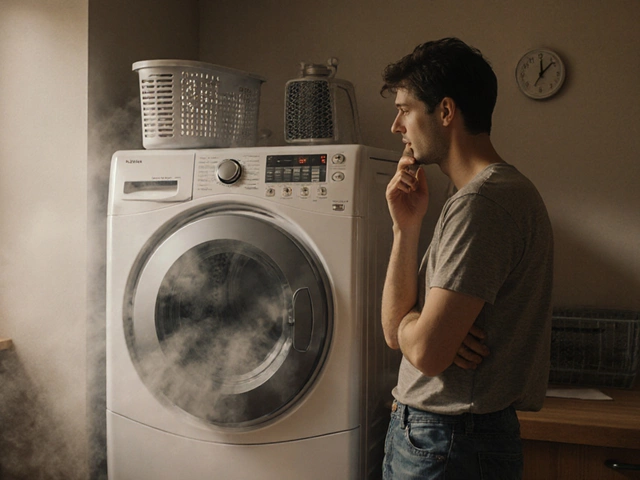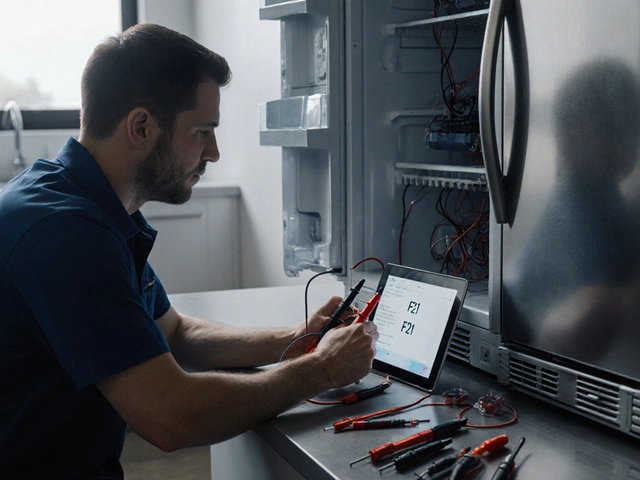Essential Appliances and Their Importance in Modern Homes
January 2 2025Ventilation Issues: What Happens When Your Home Doesn’t Breathe Properly
Ever walked into a kitchen and felt the steam cling to everything, or stepped into a bathroom and saw a foggy mirror that never clears? Those are classic signs your house is struggling to move air around. Bad ventilation isn’t just an inconvenience – it can lead to mould, higher energy bills, and even health problems. The good news? Most of the time you can catch the issues early and fix them without calling a professional.
Spotting the Warning Signs
There are a few tell‑tale clues that tell you your ventilation is out of whack. First, look for persistent condensation on windows, walls, or the ceiling. If your bathroom mirror stays fogged for hours after a shower, the fan is either not running or not strong enough. Next, notice any lingering cooking smells or grease that settles on cabinets – that usually means the kitchen extractor fan isn’t pulling air out.
Mould spots, especially in corners, under sinks, or behind appliances, are a red flag. Mould loves damp, stagnant air, and once it starts growing it can spread quickly. You might also feel a stuffy, stale feeling indoors, or notice an increase in allergy symptoms. All these symptoms point to poor indoor air quality, which is directly tied to ventilation performance.
Simple Fixes and When to Call a Pro
Start with the easy stuff. Many extractor fans just need a good clean. Grease and dust build‑up on the fan blades and filters can cut airflow by half. Turn off the power, remove the cover, and wipe everything with warm soapy water. If your fan has a replaceable filter, swap it out – a clogged filter is a common cause of weak suction.
If cleaning doesn’t help, check the fan’s power supply. A tripped breaker or a loose wire can stop the fan from running altogether. Use a voltage tester or call an electrician if you’re not comfortable working with electricity.
Sometimes the fan is simply the wrong size for the room. A small fan in a large kitchen will never clear steam fast enough. In that case, upgrading to a higher‑CFM (cubic feet per minute) model is the smart move. When you buy a new fan, look for one with a built‑in timer or humidity sensor – these features keep the fan running just long enough to clear moisture without wasting energy.
When DIY steps don’t solve the problem, it’s time to bring in a certified gas engineer or ventilation specialist. This is especially true if you suspect a gas‑related issue, like a boiler that’s not breathing properly, or if you notice carbon‑smell alongside poor airflow. Professionals can test vent pipes, check for blockages, and ensure everything meets local safety regulations.
Regular maintenance is the cheapest insurance policy against ventilation woes. Schedule a quick fan check every six months, clean filters, and give the whole system a once‑over when the heating season starts. A well‑maintained fan not only keeps moisture and smells at bay, it also helps your boiler run more efficiently, lowering your heating bills.
Bottom line: ventilation issues are rarely a mystery. Spot the signs early, clean or replace the fan, and call a pro if the problem persists. Your home will stay drier, fresher, and healthier – and you’ll avoid costly repairs down the line.
 30 Jan
30 Jan
Why Your Extractor Fan Stopped Working: Troubleshooting Tips and Solutions
Extractor fans are crucial for maintaining good air quality and removing moisture in kitchens and bathrooms. When they stop working, it can lead to poor ventilation and even damage to your home. This article explores common reasons for an extractor fan to fail, from electrical issues to mechanical failures, and provides practical solutions and maintenance tips to get them back in working order.
Read More...



